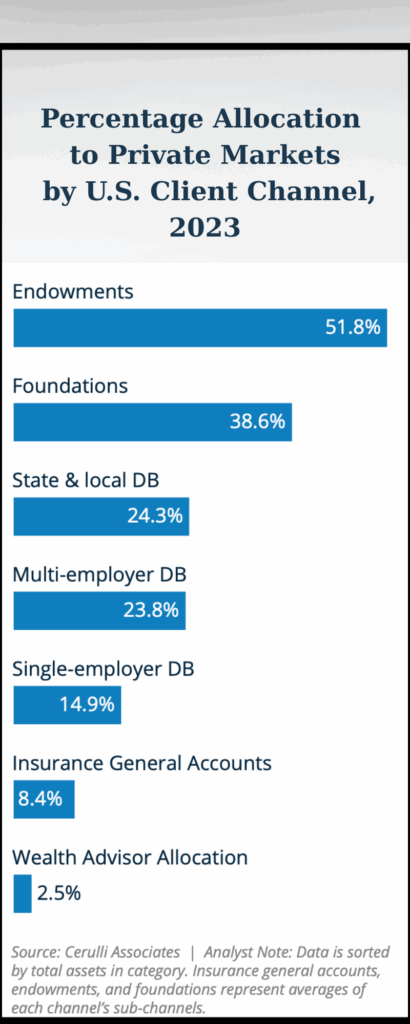
“Shadow banking” is a phenomenon I’d heard of but never fully understood. So last week I traveled to the City that Never Sleeps and to its nearly shadowless, hyper-illuminated Times Square to learn more.
I joined about 1,500 moneymen at the Marriott Marquis Hotel for a collateralized loan obligation (CLO) conference. It was a two-day meeting sponsored by DealCatalyst and the LSTA (Loan Syndication and Trading Association).
The dominant feeling in the room was cautious pessimism. President Trump’s April 2, “Liberation Day” announcement of tariff hikes had shocked, along with most of the financial world, this group of dealmakers who variously build, manage, analyze, rate, slice, dice, and distribute the bundles of high-risk loans known CLOs.
The “self-inflicted wounds” and the “uncertainty” associated with the president’s “flip-flopping” on tariffs had clearly clouded the attendees’ outlook. But as one said, “We’re not here to worry about tweets. We’re here to get deals done.”
Last year was a record-setting year for CLOs, with new issues of about $170 billion, $30 billion more than in 2024. Issuance has risen by about 20% per year since 2014. The value of CLOs outstanding approaches $1 trillion. But, as flash-polls of the audience showed, about half of the conference attendees expected a flat-to-down year in 2025.
I attended this conference to study the link between fixed annuity sales and CLO financing. Several of the big private equity firms that have bought annuity-issuing life insurers since 2013 are also major bundlers of high-risk (“leveraged”) loans into CLOs.
While CLOs represent only a single-digit share of life insurer assets, about one-third of the cash flow into CLOs currently comes from insurance companies. Ownership of AAA-rated tranches of CLOs perks up the yields of life-insurer general accounts. Higher yields can help boost the crediting rates (and sales) of fixed annuity contracts.
Curiosity about the role of CLOs in what RIJ calls the “Bermuda Triangle” strategy also brought me there. This is the synergistic business model in which big private equity (PE) companies a) own or partner with life insurers that sell fixed annuities, b) manage their general accounts, and c) reinsure the annuity liabilities offshore. Until last week, I wasn’t sure how CLOs fit into that model.
But first, a closer look at CLOs.
A ‘cattle drive’ analogy
If you’re wondering what CLOs are, or don’t quite grasp the magic of securitization—which transforms B-rated loans into AAA-rated securities—here’s a BBQ-flavored analogy. The “cows” in this analogy are the loans that are bundled into CLOs. These are B-rated, “leveraged” loans to fast-growing but high-risk mid-sized companies. Imagine, if you will:
A Clint Eastwood-style horseman who wants to drive 1,000 steers from Montana to a livestock auction in Texas. The drive will take four months. Clint needs $1 million to source the dogies in Montana, hire staff and buy supplies. Wholesale cattlemen in Texas will pay him $1,500 per delivered cow.
Past experience suggests that at least 600 of the 1,000 steers will survive the 1,485-mile trek. So Clint pre-sells a “senior, AAA-rated” tranche of 600 cows to the Texas cattlemen for $900,000. Clint is confident that at least 750 cows will survive; so he pre-sells a “mezzanine” tranche of 150 cows for $1,000 a head, or $150,000.
Here’s Clint’s incentive: All additional surviving cows—up to 250 but perhaps only 150, or even 50, or none—are his. This is the “equity tranche” of the herd. He can sell them for $1,500 apiece. After paying his cowboys and suppliers, and unhitching any collateral he may have posted as a loss-buffer, Clint hopes to clear at least $100,000 for his work.
Of course, a Nebraska blizzard might kill a quarter of his steers, wiping out his share. But Clint is an old hand at cattle drives, so he expects to come out ahead.
The analogy isn’t perfect, I admit. Real CLO tranches aren’t zero-coupon; the institutional investors typically earn regular interest and principal payments over the multi-year lives of the deals, not just a lump sum payment at the end. CLOs are also actively managed; Clint may have sold a few weak cows along the way and added a few stronger ones.
The analogy also doesn’t account for the number of skilled professionals that CLOs require: the traders, analysts, and quants who track and adapt to a hundred variables for each of the 200 or so different below-investment-grade loans that are bundled into each CLO. CLOs aren’t listed on any exchange. There’s no formal secondary market for them. Then there are unprecedented events like “Liberation Day” that play havoc with the best of the managers’ forecasts and projections.
The payoffs can be great but the tolerance for error is thin. As I heard at the conference, CLOs are “a leveraged business, so every single basis-point difference in yield is multiplied by 10.”
CLOs as ‘shadow banks’
The CLO business is a branch of securitization, a centuries-old concept whose modern history starts in the 1980s. (See Michael Lewis’ first book, “Liar’s Poker,” for an introduction.) The failure of securitized subprime mortgages in the Great Financial Crisis gave the whole industry a bad name. But CLOs stood up relatively well through that crisis and the COVID crisis.
What makes them part of the shadow banking system? CLOs are like banks in the sense that they make loans. (Whether they create “credit money” out of thin air, as banks do, is beyond the scope of this article.) They’re called shadow banks because they aren’t part of the Federal Reserve system. They’re not regulated as tightly as banks (because they solicit funds from institutions, not retail investors). The Fed isn’t required to bail them out in a credit crisis—but it can.
So, how are CLOs relevant to the Bermuda Triangle? Here’s my impression.
PE firms need institutional investors to buy the safe AAA-tranches of their CLOs, which make up about three-quarters of the typical loan “stack.” The PE firms themselves take the high-risk, high-yield, low-cost equity tranches. If the PE firm owns a life insurer, it controls its own institutional investor.
Equally important, the life insurer can issue fixed annuities, which are long-term, tax-deferred, volatility-controlled investment-like products suitable for sale to owners of rollover IRAs. According to the Investment Company Institute, IRAs contain $17 trillion in savings.
In short, ownership of life/annuity companies has given PE companies a tool for tapping the virtually bottomless pool of tax-deferred U.S. retirement savings for their high-profit, lightly-regulated private credit businesses.
The 4th leg of the Bermuda Triangle
The CLO/annuity nexus is potentially incestuous; in practice it’s diversified. One conference attendee assured me that life insurers typically buy senior CLO tranches from many different CLO managers—not only from the PE firms they have ties with. Conversely, PE firms that manage CLOs typically receive funding from many different institutional investors—not only from the life insurers they have ties with.
In any case, participants in the DealCatalyst/LSTA conference last week had a more immediate mess on their plates. They’re preoccupied with assessing the damage that new tariffs, if they go into effect, might have on their borrowers’ creditworthiness. Import-dependent borrowers in the auto, chemical, and consumer-discretionary industries are perceived as the most tariff-sensitive.
If necessary, CLO managers can off-load or restructure loans to companies that they believe will suffer from tariff-related price shocks. The more opportunistic CLO managers will look to pick up underpriced loans that defensive managers abandoned. It’s a complex business—and a shadowy fourth leg of the Bermuda Triangle.
© 2025 RIJ Publishing LLC. All rights reserved.



